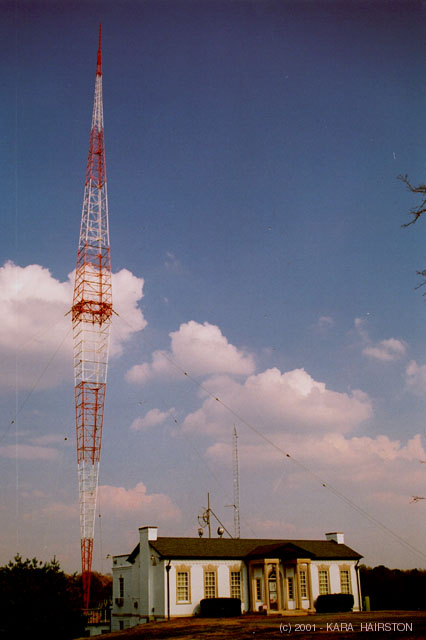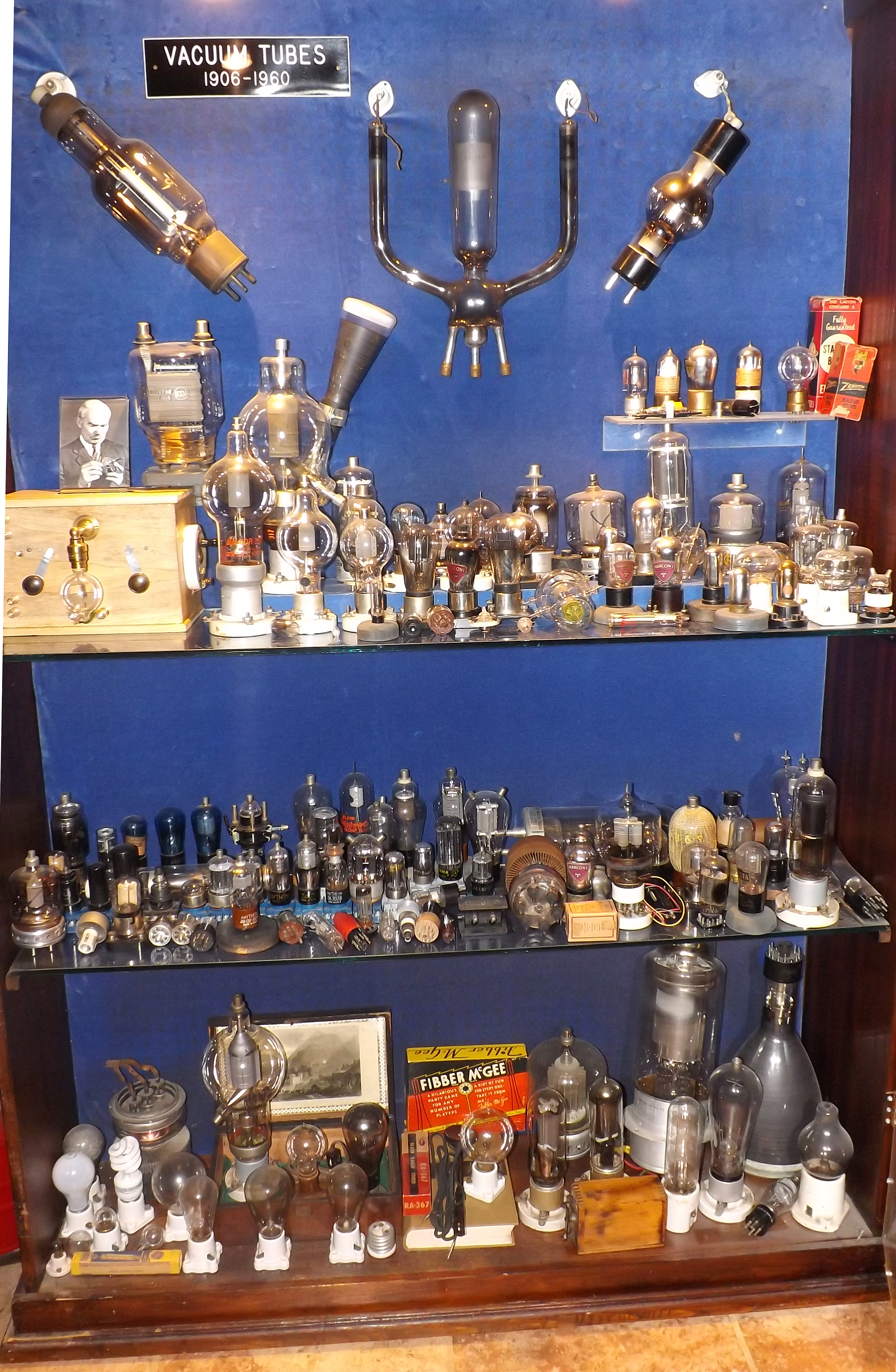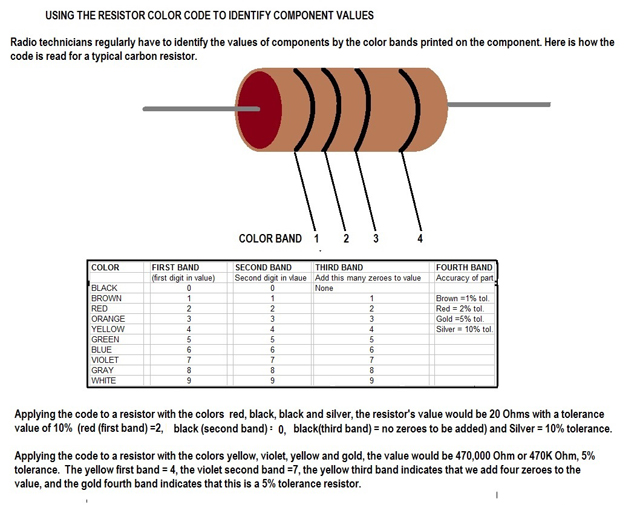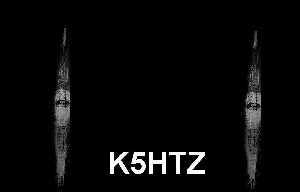
| MUSEUM OF YESTERDAY |


Radio Related Links |
 |
from OTR.net |
Please continue your tour...
THE COMPONENTS THAT MADE RADIO
VACUUM TUBES
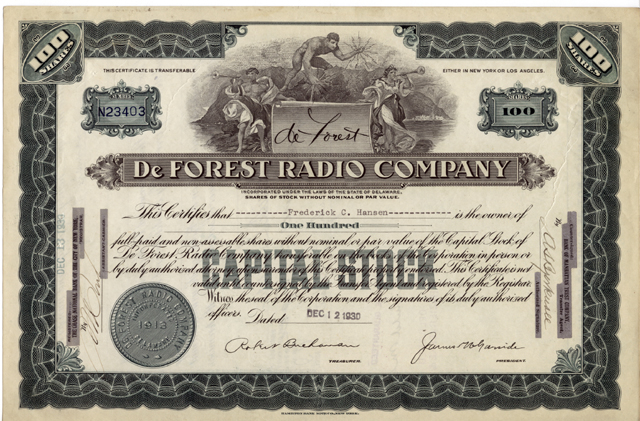
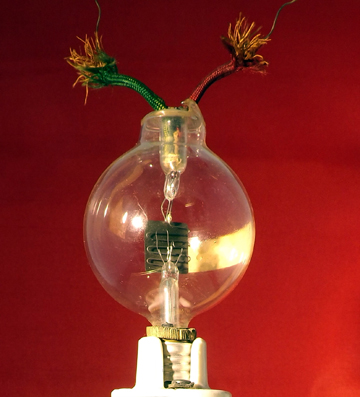 |
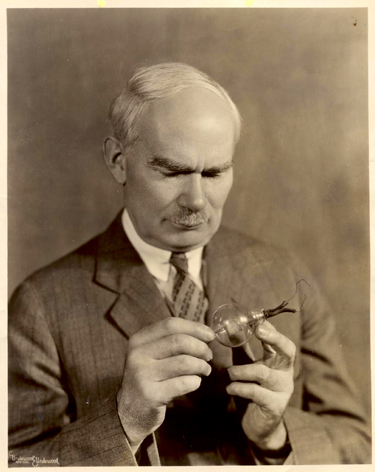 |
At left, the museum's DeForest Audion Tube. This is a rare and treasured piece of the collection.
 |
Dr. Lee DeForest, pictured above, is credited with the invention of the vacuum tube, a device which revolutionized radio in the early 20th Century. While it is universally accepted that he was the inventor, testimony from later patent infringement lawsuits between DeForest and fellow inventor Edwin Armstrong, proved that DeForest did not fully understand the operation of his own invention. It was Armstrong who deployed DeForest's laboratory experimental device to bring us modern radio circuitry including the Super-regenerative and Super-hetrodyne receiver as we know it. |
The following photos are from the museum's extensive 1906-1970 vacuum tube collection.
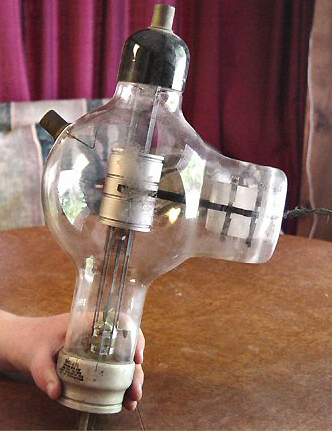
A large transmitting tube from a commercial AM station
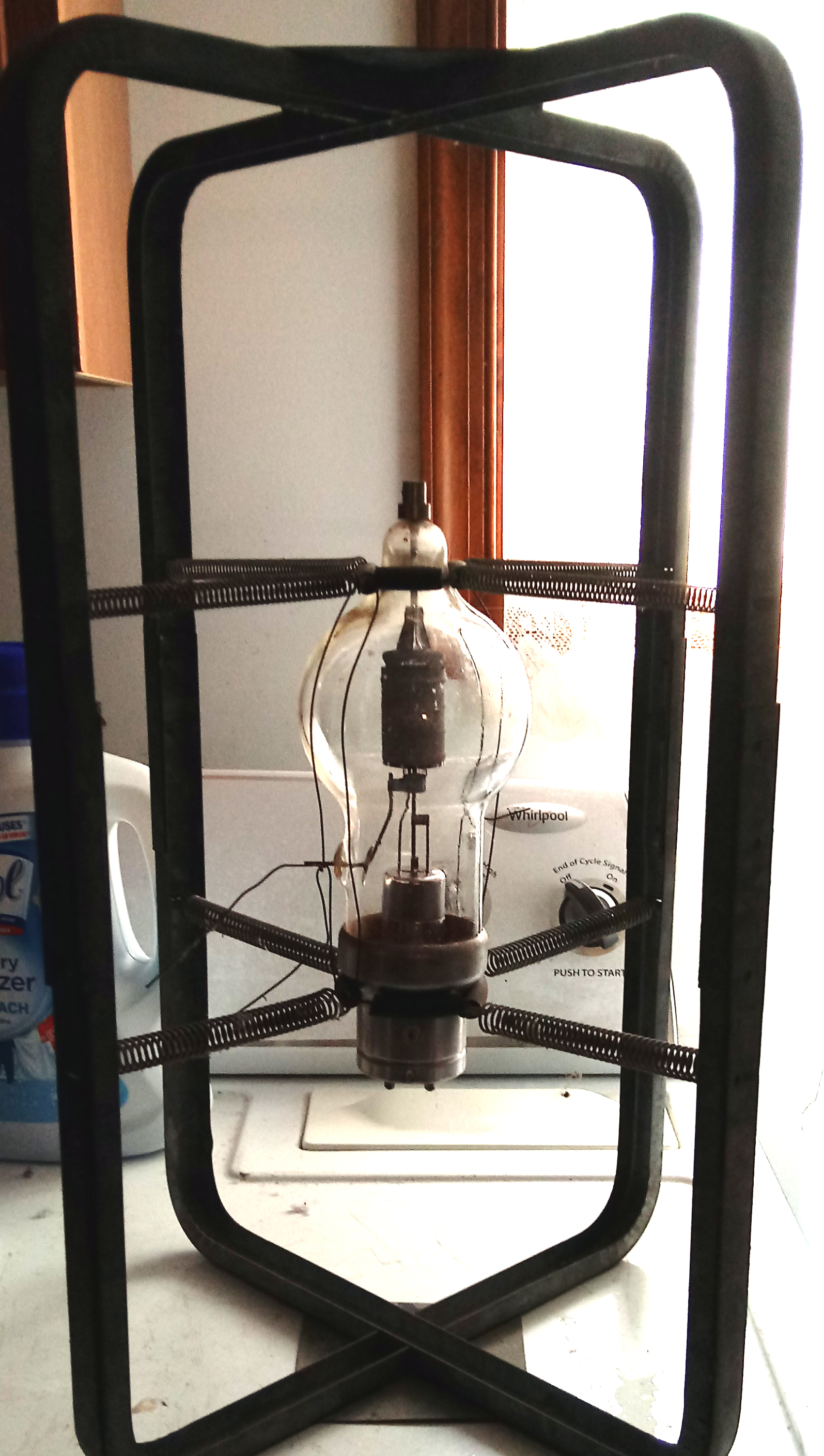
The elaborate method used to transport and store large transmitting tubes such as the 250-TL shown here.
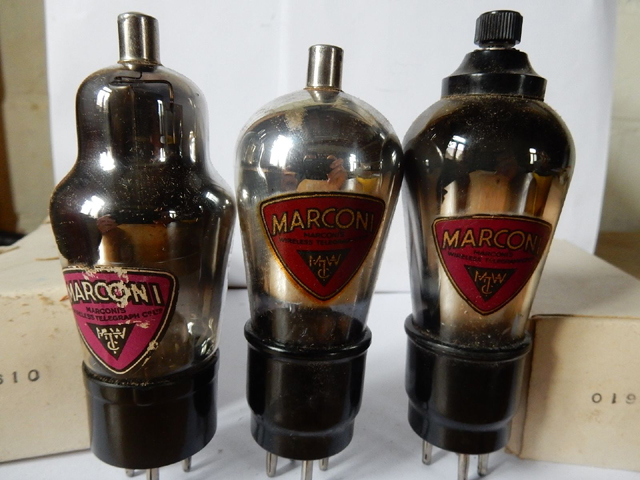
Varieties of early vacuum tubes from the Marconi Radio Company
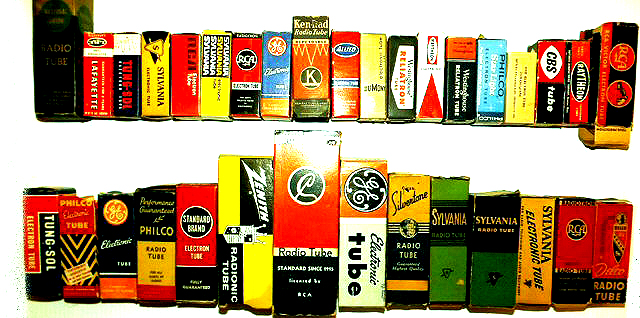
Some of the vacuum tube brands available in the "radio" years. Note that, as television, high fidelity and industrial use of tubes developed, branding also changed. Older packaging generally referred to the contents as "radio" tubes whereas newer versions adopted the term "electron or electronic" tube. Some brands even adopted their own terms such as "radiotron," "hy-tron" and "reliatron."
While there were literally hundreds of tube brands packaged and sold throughout the history of radio, here is a listing of some of the more popular brands:
ALLIED
ARCTURUS
ADMIRAL
CBS HYTRON
CROSLEY
CUNNINGHAM
DEFOREST
DELCO
DUMONT
EIMAC
GENERAL ELECTRIC
GREELEY
JAN (Joint Army-Navy)
(JAN labeling was applied generic and combined brands of tubes supplied under military contracts)
KEN-RAD
LAFAYETTE
MARCONI
MULLARD
NATIONAL UNION
PHILCO
RAYTHEON
RCA
SILVERTONE
STANDARD BRAND
SYLVANIA
TAYLOR
TUNG-SOL
WESTERN ELECTRIC
WESTINGHOUSE
ZENITH
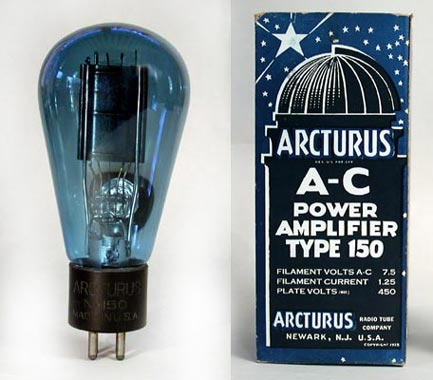
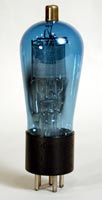
Although there were many brands of tubes that came and later faded from the scene, such as Cunningham, National Union and Tung-Sol, one unique brand made it mark both with early reliability and its distinctive blue glass envelopes. Pictured above are examples of "Arcturus Blue" tubes from the 1920s.
View of our vacuum tube collection which spans 1906 through 1960.
(click photo to see enlarged image)
(click photo to see enlarged image)
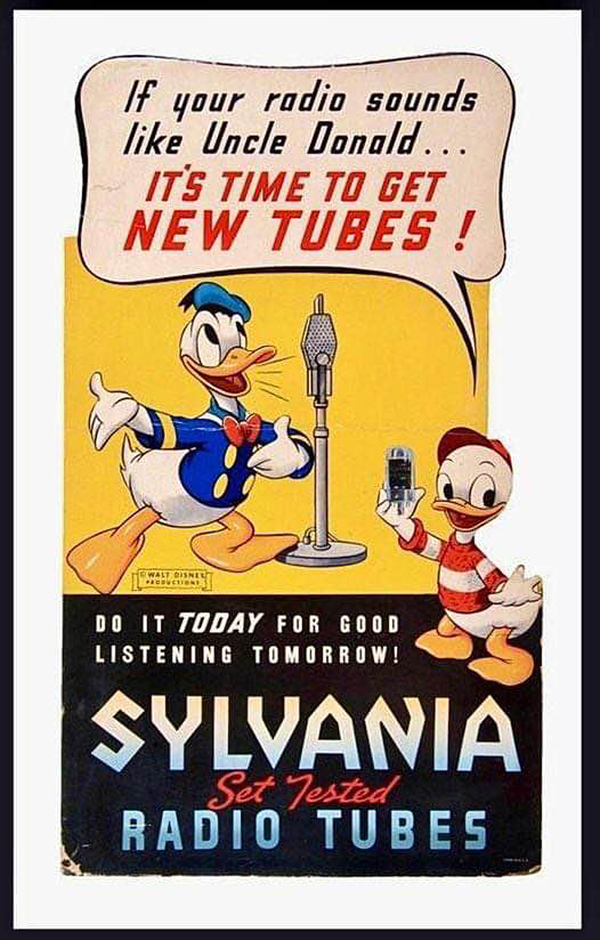
Typical tube manufacturer's advertising from 1950s.

Receiver vacuum tubes from the 1920s "battery radio era"
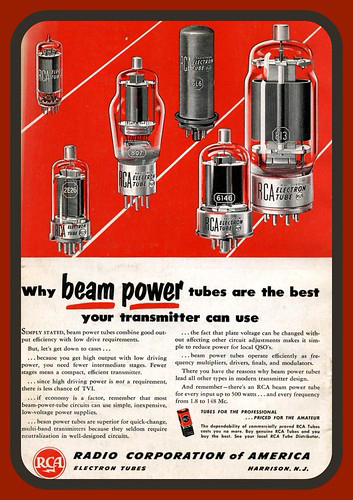
World War II era ad for RCA "Beam Power"transmitting tubes
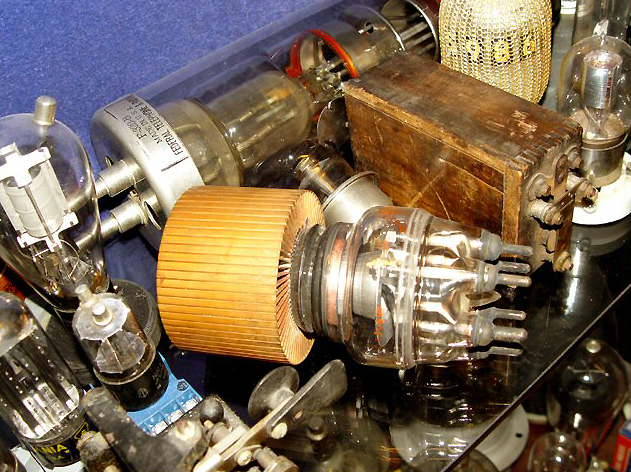
At the center of photo above is a high power final amplifier tube from a large broadcast transmitter.
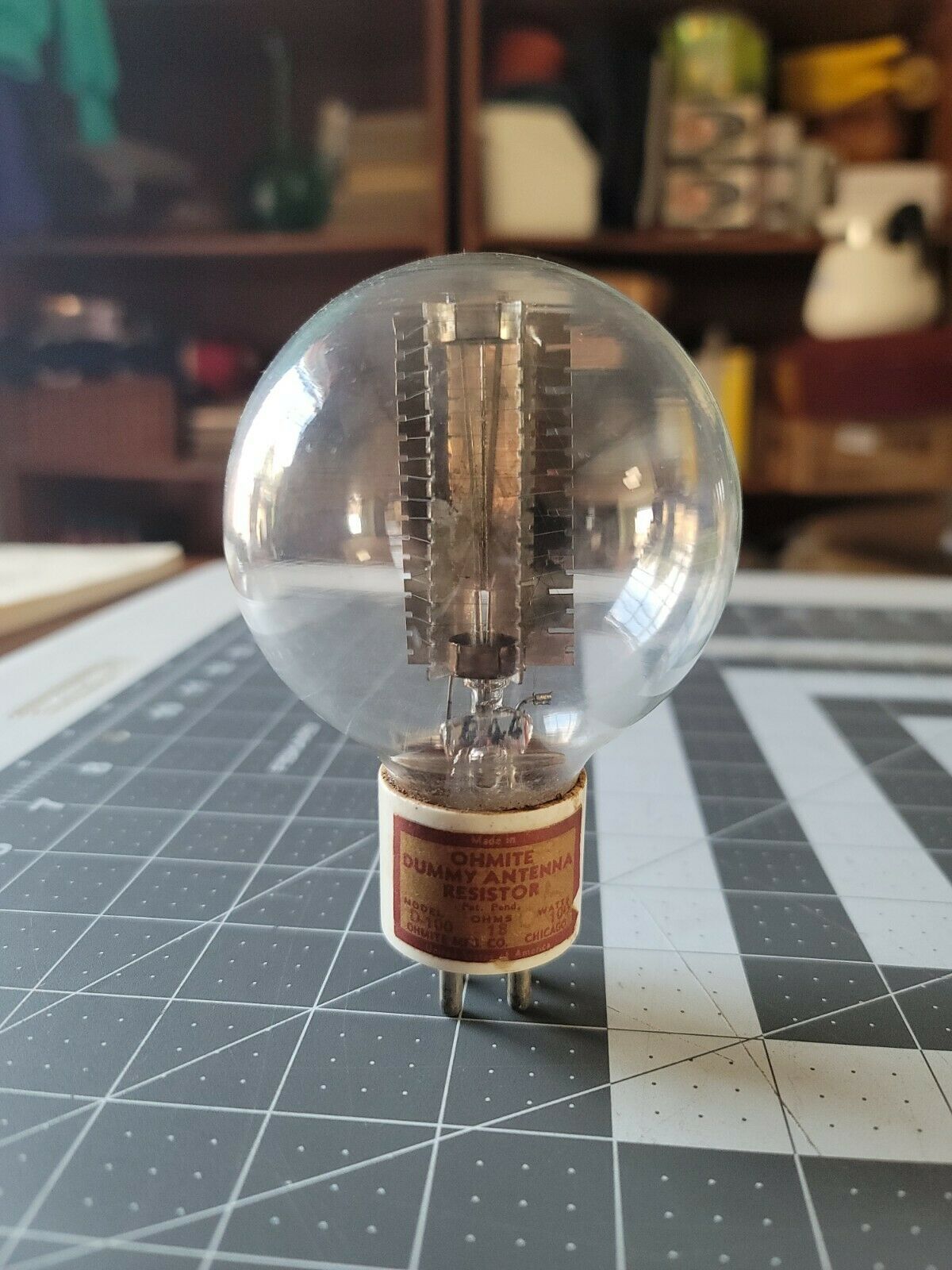
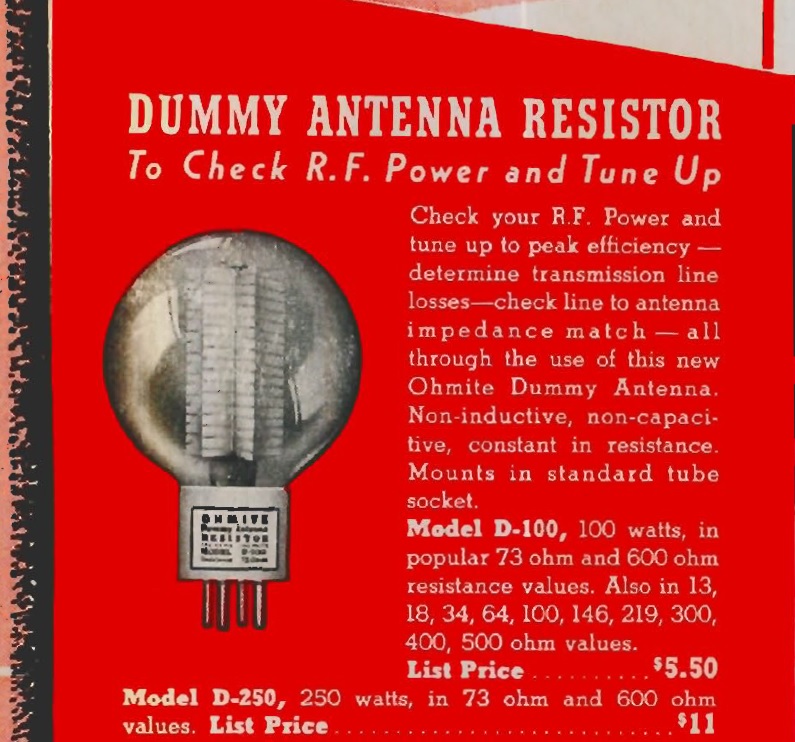
There were also special purpose tube-like devices which performed functions not associated with electron flow control. Shown here is a "dummy load" resistor bulb intended to absorb RF from a transmitter under test. Once these devices were no longer manufactured, many hams realized that a standard tungsten filament light bulb could serve the same purpose. Other special purpose devices in glass envelopes that resembled vacuum tunes, included ballasts, time delay relays and photo-detectors used in sound motion picture projectors. Below is a photo of the museum's Ohmite 100 watt dummy load as part of an RF power meter made by BUD manufacturing Company in the mid-1930s. The item was featured in several editions of the "Radio Handbook," from that era. Photo beside the device is a page from the handbook detailing the instrument.
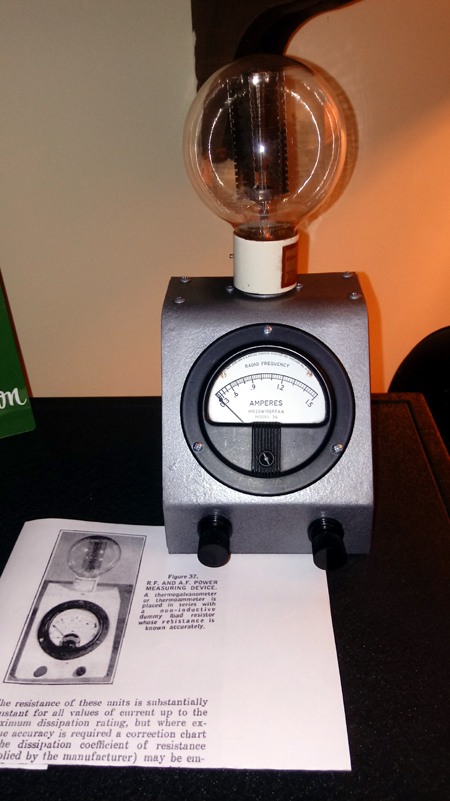
HAND-WIRED CHASSIS HARDWARE
The following photographs illustrate some of the chassis hardware that was available to builders of hand-wired radio receiving, transmitting and test equipment in the era prior to introduction of printed circuit technology.
VINTAGE CATALOGS
The following vintage parts catalogs are made available to aidcollectors and restorers in the identification of parts used in vintage equipment. In additon to these offerings, there are many vintage catalogs and manufacturers' information available at the web site: https://worldradiohistory.com
E.F. Johnson parts catalog #971 from late 1940s. ![]()
This is an excellent resource for identification and specs on ceramic and other RF handling parts sold by Johnson.
E.F. Johnson Air Wound Inductors Catalog 703 ![]()
National Radio parts catalog from 1947 ![]()
Thordarson Transformer Guide from 1938 ![]()
(Includes their line of amateur radio transmitters)
Thordarson Transformer Guide from 1942 ![]()
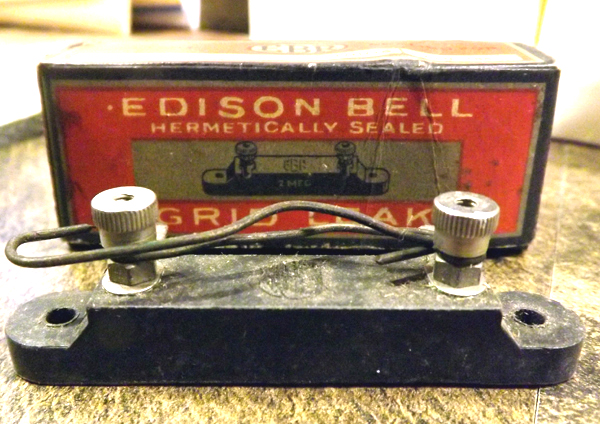
Almost as important to radio as the discovery of the vacuum tube, was the principle of grid leak detection. Grid Leak detection, discovered by Lee DeForet, utilized the vacuum tube as a rectification device to demodulate the audio component from the radio frequency carrier signal. In the process, the audio was also amplified, which provided sufficient power to operate a headphone, or provide an audio signal to be further amplified for listening on a speaker. The combination .25 microfarad capacitor and 2 megohm resistor in a moulded device, shown above, provided optimal values for facilitating grid leak currents in early vacuum tube receivers.

Examples of capacitors used in radio equipment throughout the years.

Various common types of resistors used in radio and electronics
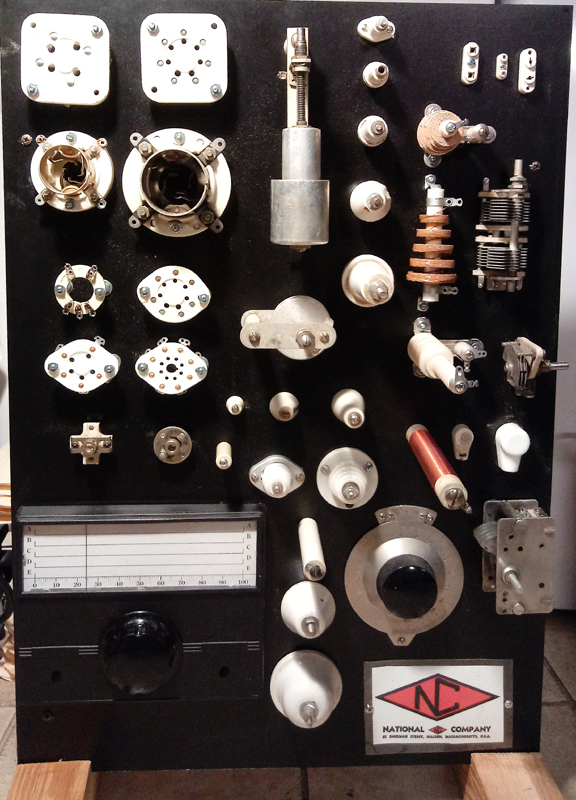
While National Company was best known for it's line of communications receivers, which dated back almost to the inception of amateur radio, the company did engage in the manufacture of parts for the builders' market. During World War II, the company produced many of the parts used in military transmitters and receivers. The parts division continued for a number if years following the war. The display above shows some of the parts that appeared in the company's 1947 catalog. A video, showing the various pages of the catalog, can be seen can be seen in the next gallery.
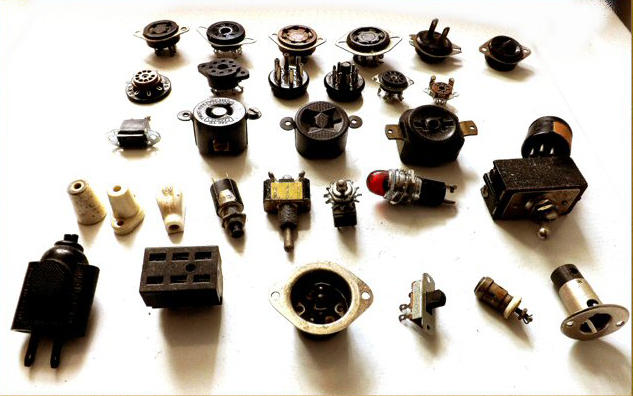
Tube sockets, connectors and switches used in the era of "hand wired" radio chassis.
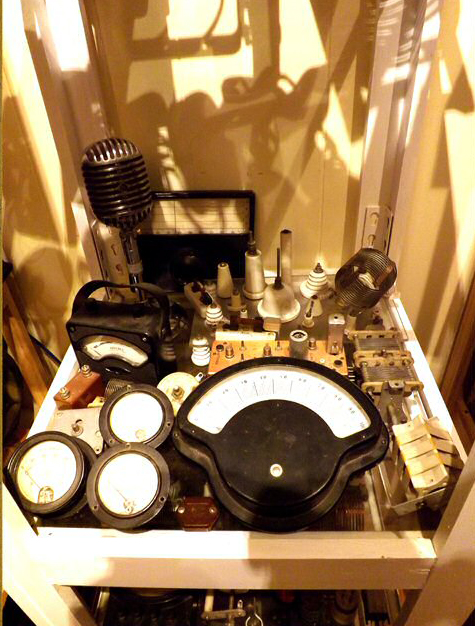
An assortment of meters and other components intended for use with hand-wired chassis.
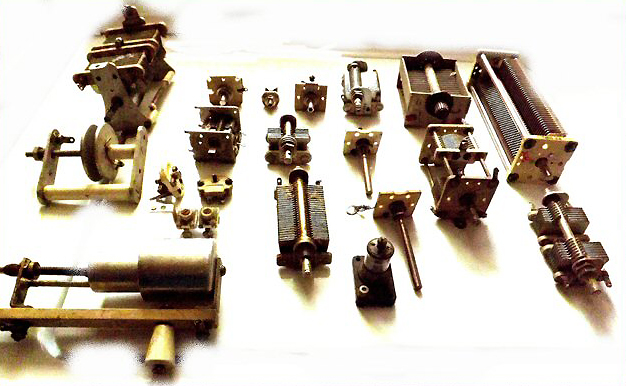
An assortment of variable capacitors used in receivers and transmitters of the era
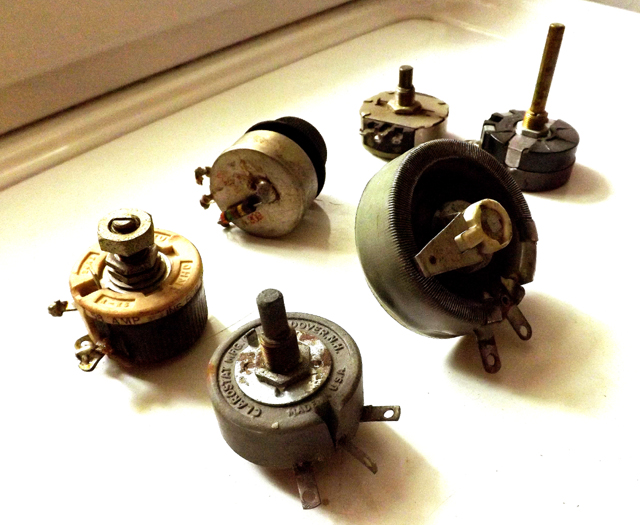
Some examples of potentiometers used in early radio construction.
 |
Here is some valuable technical information. The chart below illustrates how technicians read the values of components, such as resistors, based on color bands that are stamped on the parts. Often, this is the only way to identify the value of a part in a radio that is undergoing repair or restoration. NOTE: You can click the picture below to see an enlarged version. |

An assortment of radio transformers from the 1920's through the 1930's

A collection of radio equipment knobs used between 1920 and 1960
Please continue on to the next gallery
Copyright 2023, The Museum Of Yesterday


